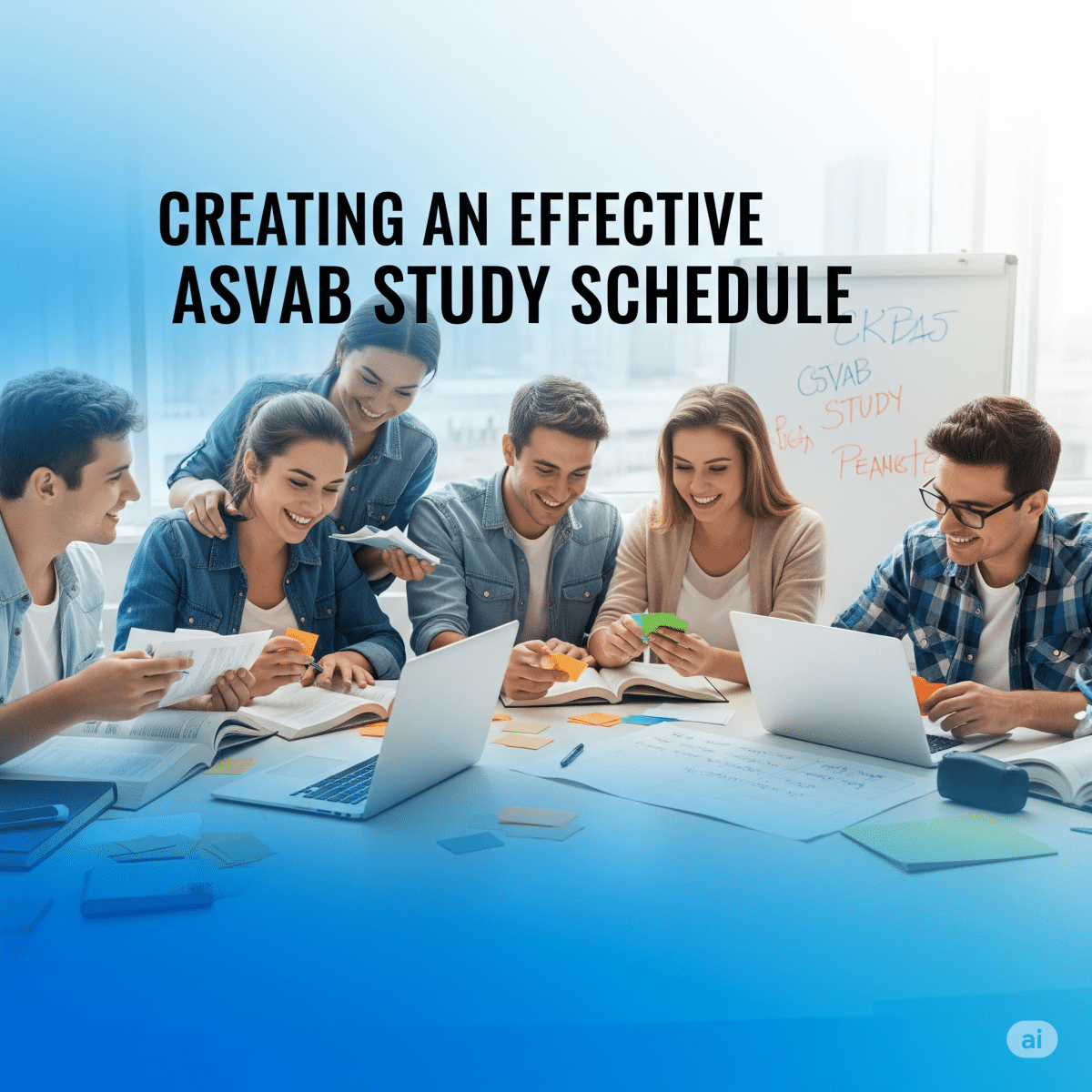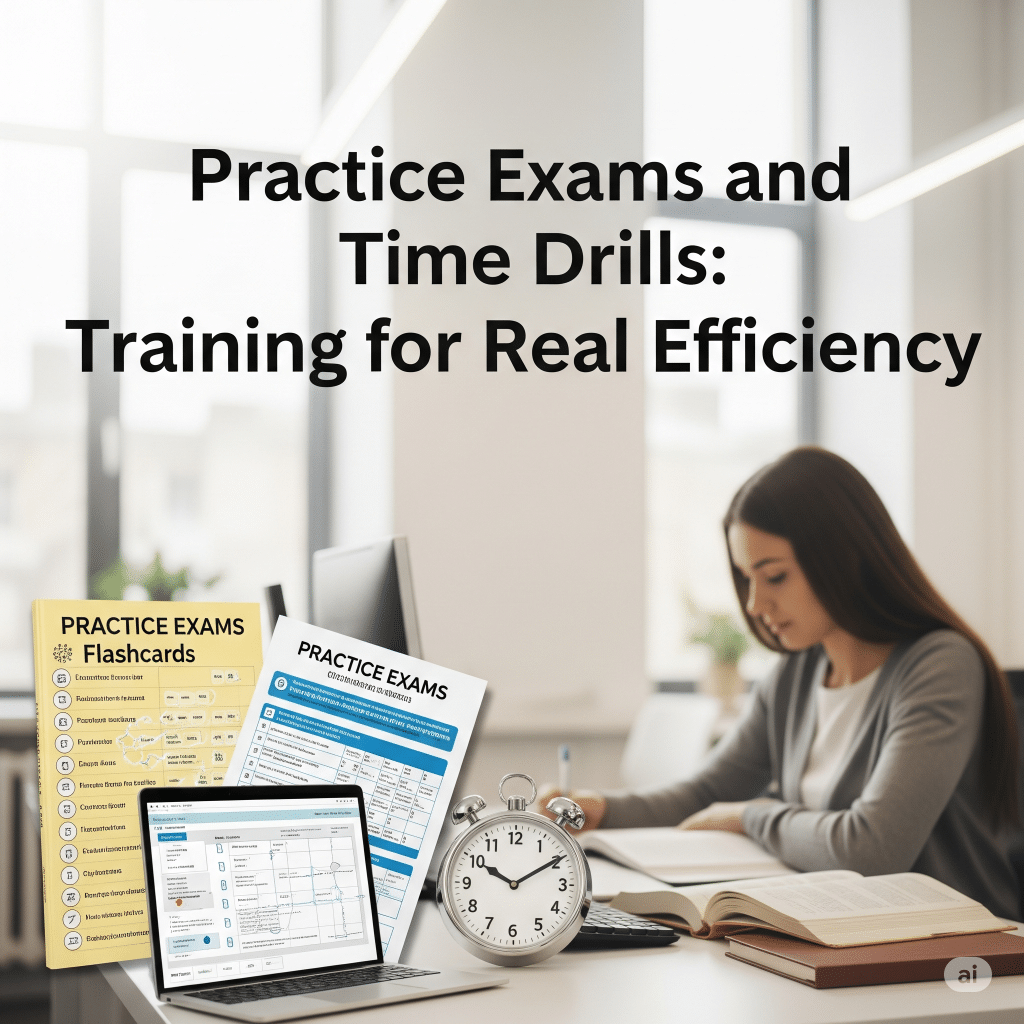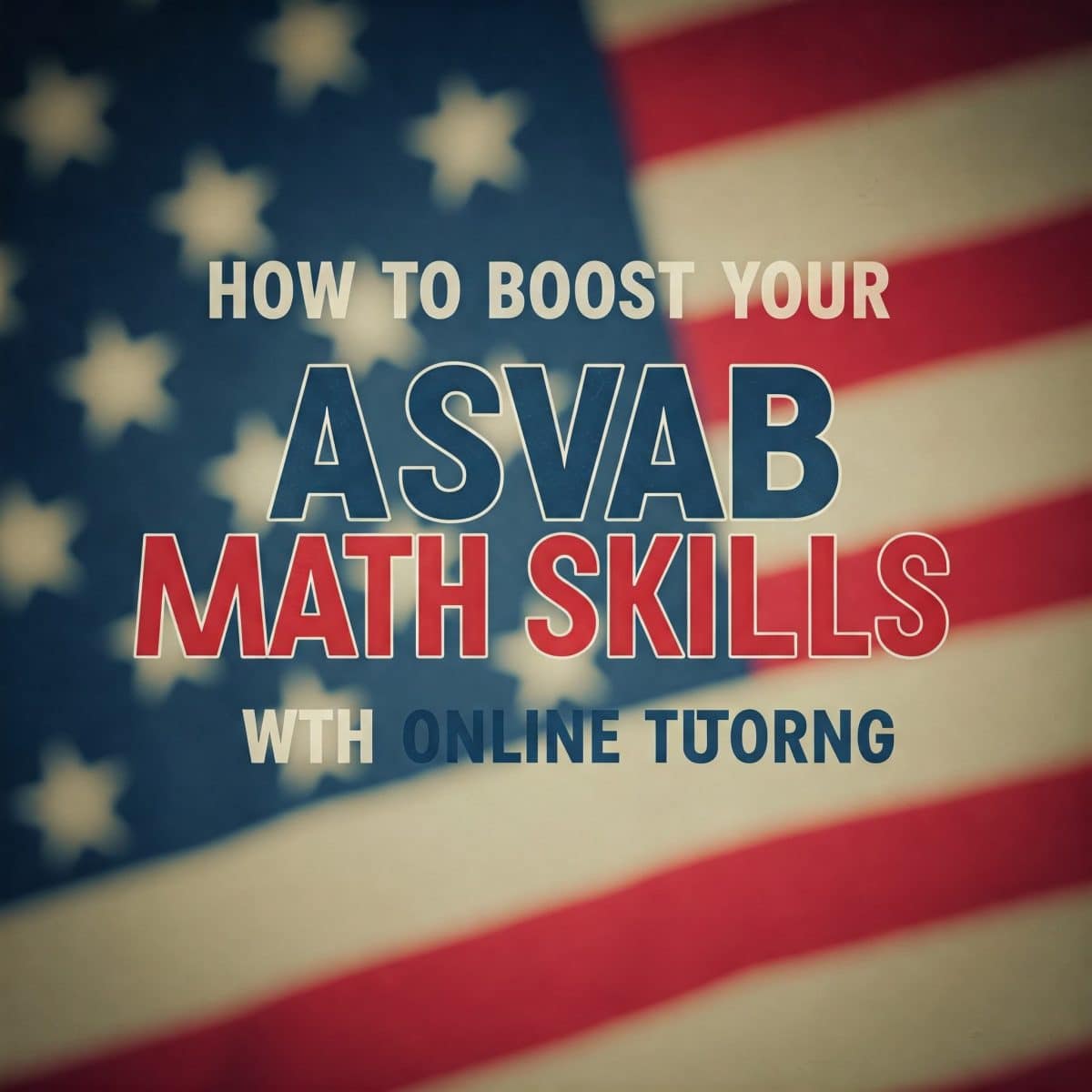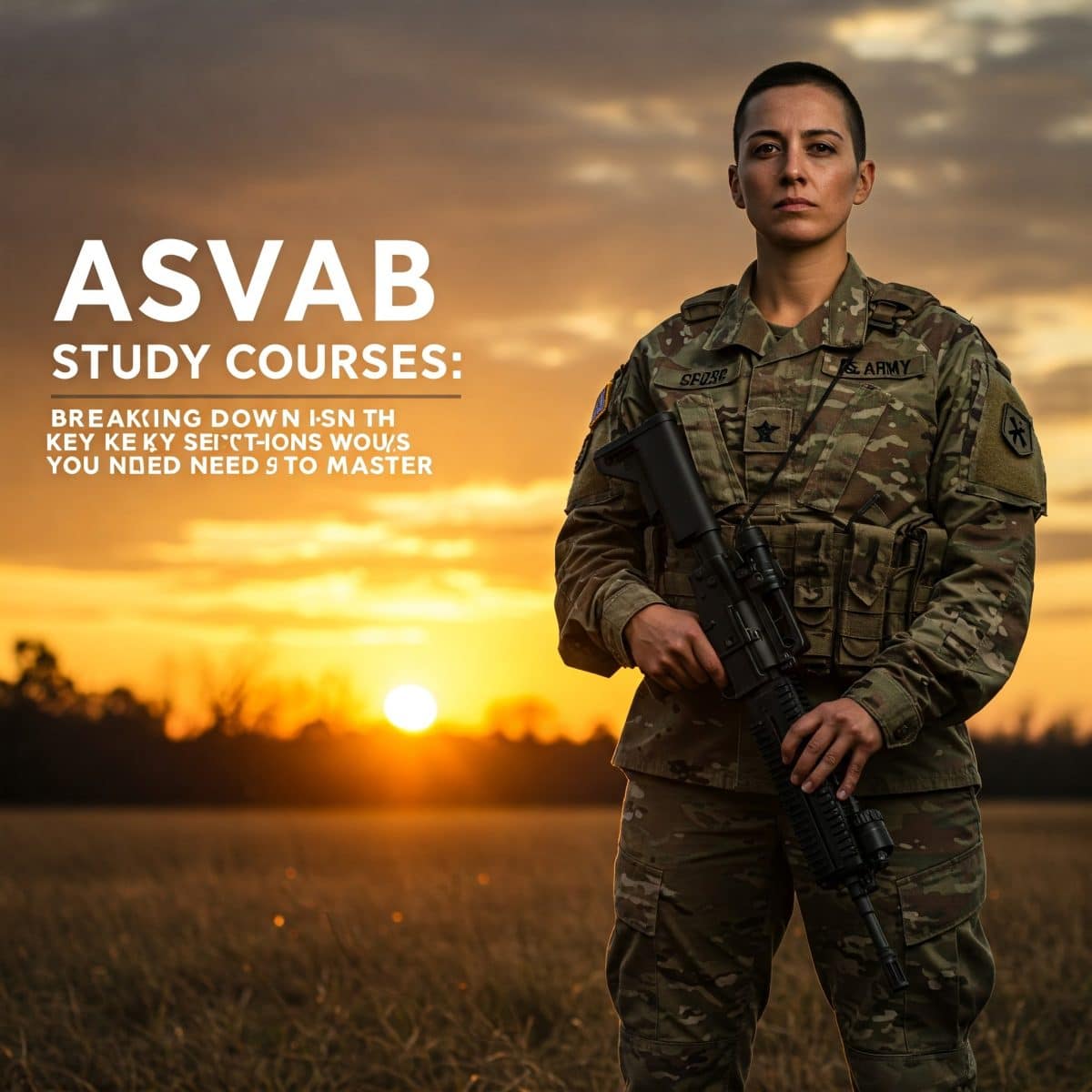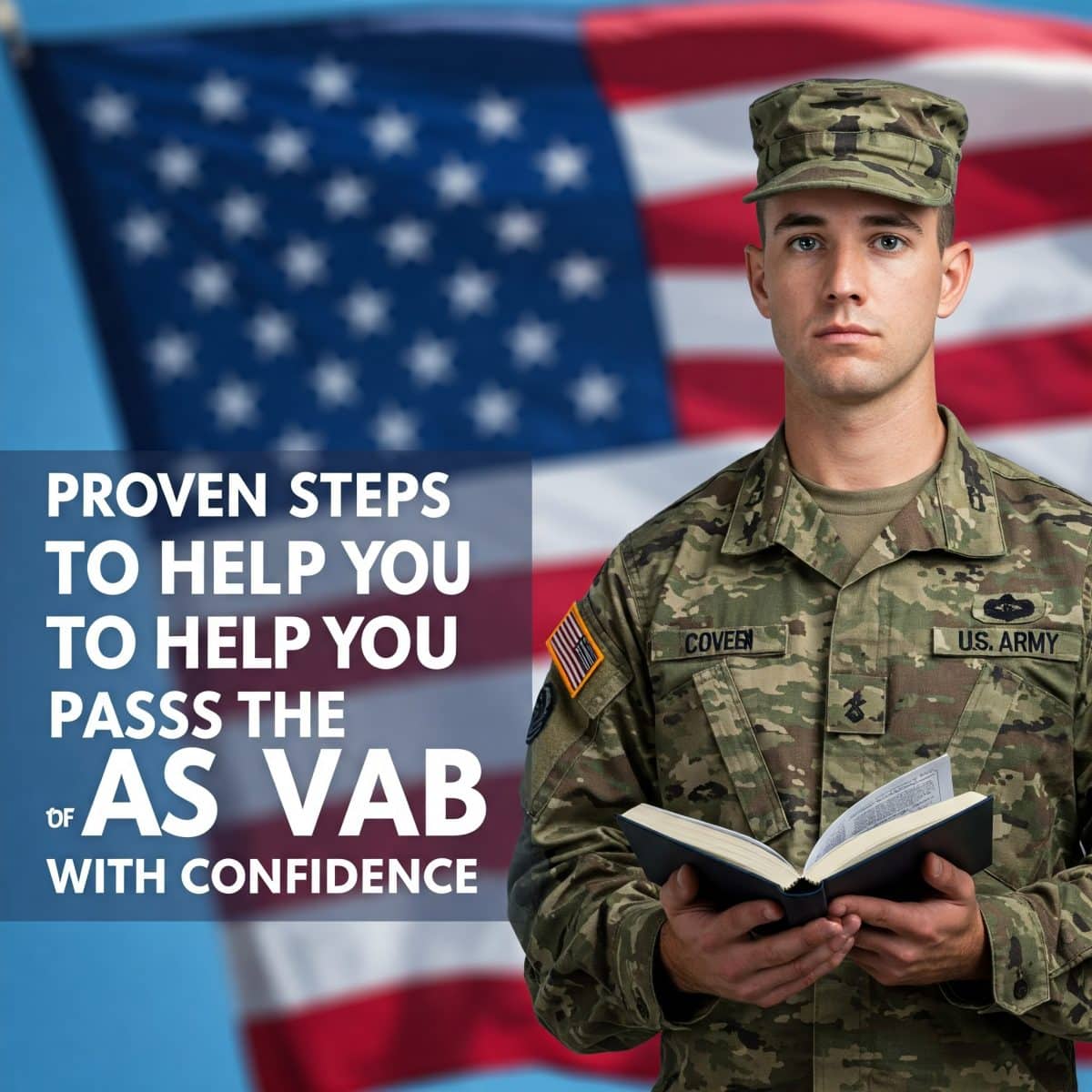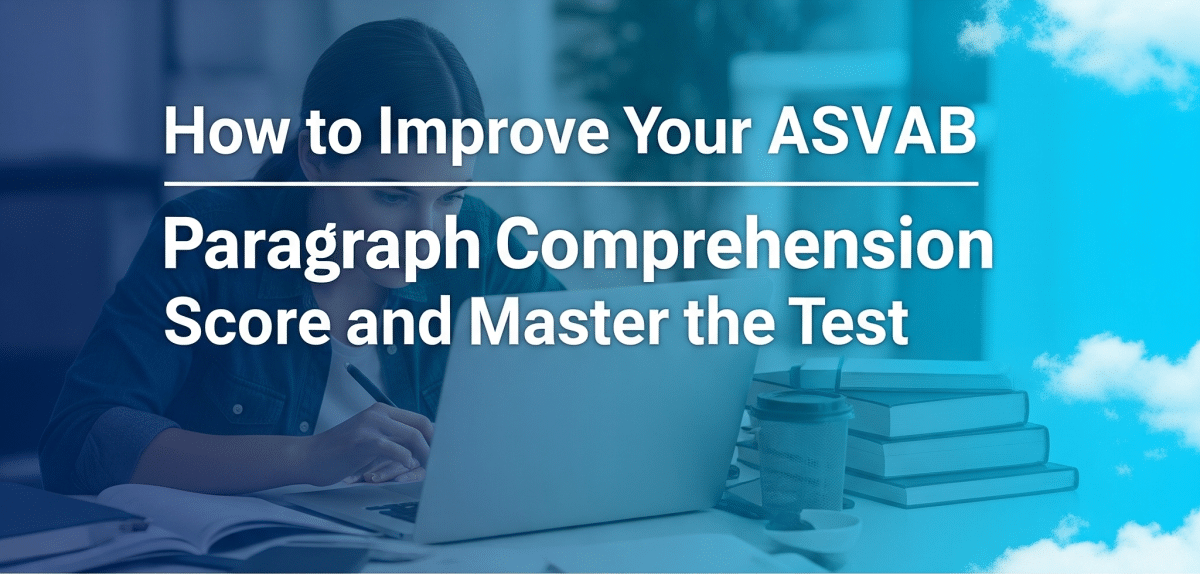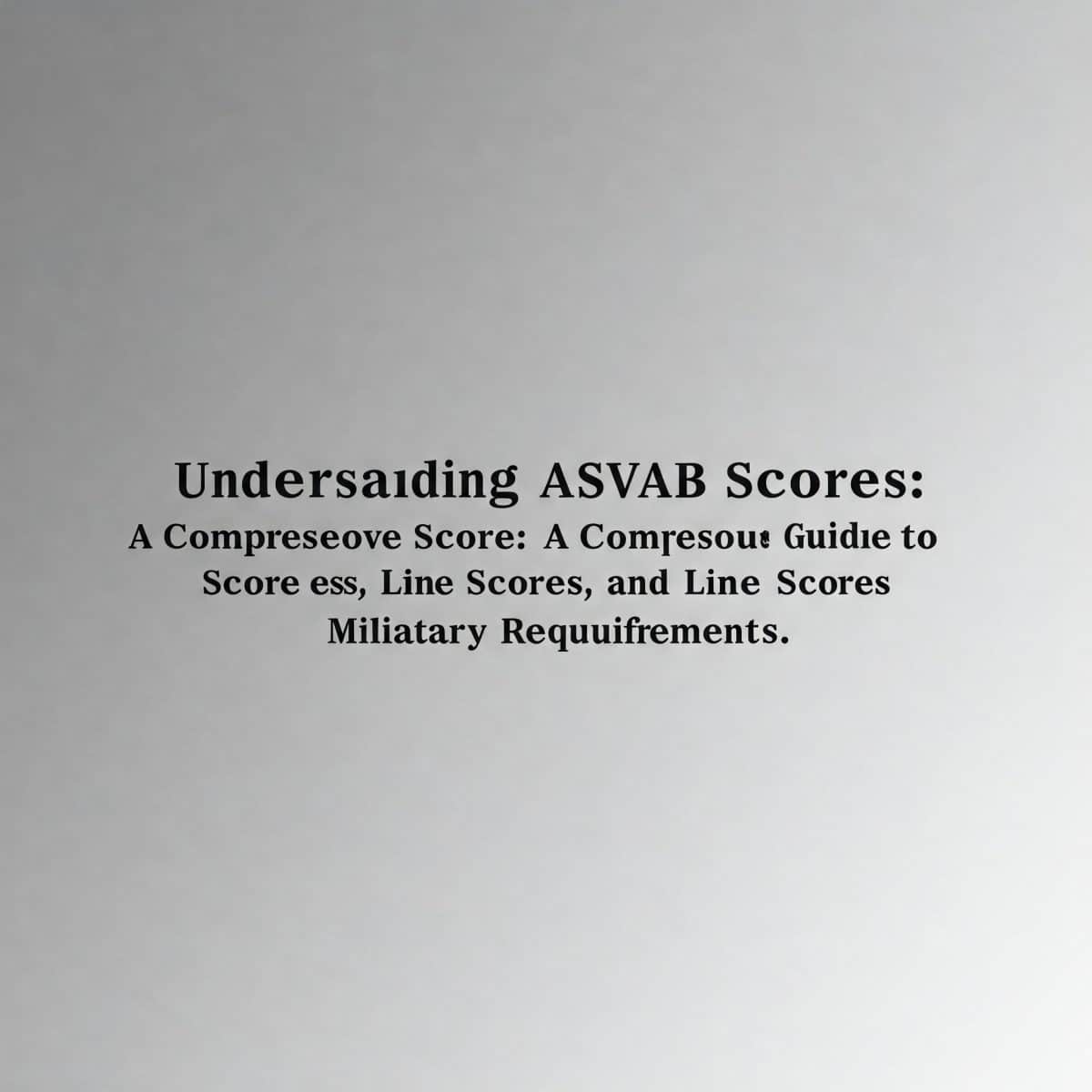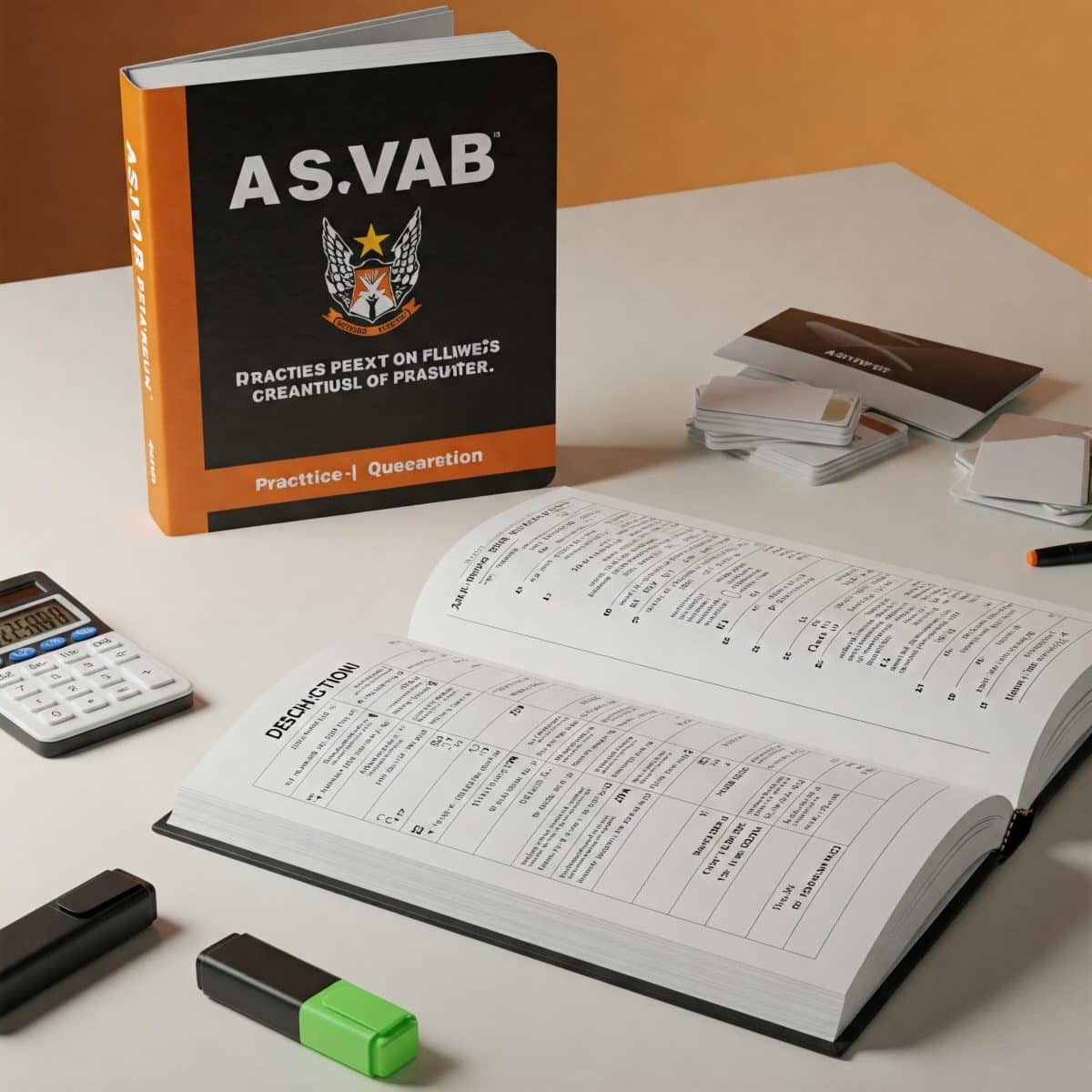At Andy’s ASVAB Training, we understand the challenges you face while preparing for the ASVAB test. With years of experience and a proven track record, we’re here to guide you every step of the way. The Paragraph Comprehension section often poses unique challenges, but with the right strategies, you can master it. This blog provides actionable tips and insights tailored to your success.
Understanding the ASVAB Paragraph Comprehension Section
The Paragraph Comprehension section of the ASVAB assesses your ability to extract important information from written passages. This is an essential skill not just for the ASVAB but also for many military and civilian roles that require reading comprehension. Whether you’re deciphering a technical report or a straightforward narrative, this section evaluates how well you understand and analyze written material.
What to Expect:
- The Paragraph Comprehension section contains several passages of varying lengths.
- Questions are designed to test your understanding of the passage, focusing on the main idea, specific details, inferences, and the meaning of words in context.
- You’ll encounter questions that ask about the central theme of a passage, conclusions you can draw, and meanings of vocabulary based on how words are used in context.
Why It Matters:
- This section significantly influences your Armed Forces Qualification Test (AFQT) score, which determines your eligibility for military service.
- A high score in this section can open doors to more specialized positions and opportunities in your chosen military branch.
To excel, you must develop an in-depth understanding of each question type and the methods to tackle them. By familiarizing yourself with the types of questions and practicing with real test materials, you’ll improve your ability to extract relevant information quickly.
For expert tips and a comprehensive approach, check out our Essential Strategies for Excelling on the ASVAB, where we break down strategies for success across all sections of the test, including Paragraph Comprehension.
Effective Reading Strategies
To perform well in the Paragraph Comprehension section, your reading strategy is key. It’s not just about reading quickly; it’s about reading with purpose and focus. Effective readers employ specific strategies to extract essential information, and with consistent practice, you can hone these techniques to excel in the test.
Active Reading Techniques:
- Highlight Main Points: As you read a passage, underline or highlight key phrases and sentences that seem central to the meaning. Look for words like “because,” “therefore,” and “however” that signal important relationships.
- Summarize Each Paragraph: After reading each paragraph, take a moment to mentally or verbally summarize its main point in one sentence. This helps reinforce your understanding and memory of the passage.
Skimming vs. Deep Reading:
- Skim for the Big Picture: Before diving deep into the text, quickly skim through the passage to get an overall sense of the topic and structure. Pay attention to the introduction, headings, and conclusion.
- Read for Detail: Once you’ve grasped the overall idea, go back and read more carefully to catch specific details that will help you answer questions.
Practice Regularly:
Read a variety of materials every day, such as news articles, academic papers, and novels. This will expose you to different writing styles and increase your comprehension speed.
At Andy’s ASVAB Training, we emphasize regular practice with both timed and untimed reading exercises. This way, you’ll become comfortable both with comprehending dense passages and answering questions under time constraints.
By utilizing the resources offered in our 40 instructional videos, you’ll learn to tackle even the toughest passages with confidence.
Time Management During the Test
Time management is a critical aspect of performing well on the ASVAB. With limited time and many questions to answer, it’s important to know how to pace yourself during the Paragraph Comprehension section.
Prioritize Questions:
- Answer the easier questions first. These are often factual or based on clear details from the passage. Once you’ve answered these, you’ll feel more confident tackling the more challenging ones.
- Skip questions that seem difficult at first glance and come back to them after you’ve answered the rest. This helps reduce anxiety and ensures you don’t waste time on questions that may require deeper analysis.
Track Time Per Question:
- Allocate roughly 1-2 minutes per question, depending on the length and complexity of the passage. Keep an eye on the clock and adjust your speed as needed.
- If you find yourself spending too long on a single question, mark it and move on to ensure you have enough time for the entire section.
Avoid Overthinking:
Sometimes, test takers overanalyze questions or answers. If you’ve narrowed down your choices to two options, pick the one that best fits the passage. Trust your instincts and avoid second-guessing yourself too much.
At Andy’s ASVAB Training, we prepare you with timed practice tests that simulate real test conditions. These exercises will help you build the speed and confidence necessary to excel. Our 16 live classes weekly provide you with an interactive environment where you can receive personalized feedback on your pacing and strategies.
Recognizing Key Information
In the ASVAB Paragraph Comprehension section, being able to quickly recognize key information is crucial for answering questions accurately and efficiently. The ability to focus on the most relevant details in a passage will save you time and boost your score.
Focus on Signal Words:
- Certain words and phrases in the passage can help you identify important ideas or relationships. For example, words like “because,” “although,” “however,” and “therefore” often signal a cause-and-effect relationship or a contrast. Recognizing these can guide your interpretation of the passage.
- Watch for terms that indicate changes in tone or perspective, such as “on the other hand” or “in conclusion,” which will help you understand shifts in the argument or ideas.
Understand Context:
- When you encounter a difficult word or unfamiliar idea, don’t panic. Instead, use context clues from the surrounding sentences to deduce its meaning. This approach can often help you understand the passage more deeply without having to rely on external knowledge.
- Consider how the passage flows and what the author’s main point might be. This will help you determine which details are worth noting and which can be ignored.
At Andy’s ASVAB Training, we emphasize the importance of practicing these skills. Our ASVAB Test Prep Book contains specific exercises designed to help you identify key information quickly. The more you practice recognizing important elements, the easier it will become on test day.
Improving Vocabulary
A strong vocabulary is an essential asset when tackling the ASVAB Paragraph Comprehension section. The ability to quickly grasp the meaning of unfamiliar words in context will significantly enhance your comprehension and overall performance on the test.
Daily Practice:
- Dedicate time each day to learn new words. Aim to learn 5-10 new words daily. This consistent approach will help you steadily expand your vocabulary over time.
- Focus on words that commonly appear in written materials, such as newspapers, books, and academic articles. These sources often contain words similar to those you’ll encounter on the ASVAB.
Use Flashcards:
- Create flashcards to reinforce the words you’ve learned. On one side, write the word, and on the other, include its definition, synonyms, and an example sentence. Regularly review these flashcards to boost retention.
- There are also several vocabulary apps that can help you memorize and test yourself on new words. Consider integrating these into your daily study routine.
Contextual Learning:
- Instead of memorizing isolated words, focus on learning words in the context of sentences. This will help you understand how the word functions in different situations and make it easier to deduce meanings on the ASVAB.
- For instance, when you come across an unfamiliar word in a passage, try to infer its meaning by considering the surrounding context. This is especially helpful when dealing with multiple-choice questions.
At Andy’s ASVAB Training, we encourage our students to engage with a variety of reading materials and use vocabulary-building exercises to continually improve their word knowledge. With the help of our 40 instructional videos, you’ll learn proven strategies for improving vocabulary retention and applying these skills directly to the ASVAB test.
Leveraging Practice Tests
Practice tests are one of the most effective ways to prepare for the ASVAB, especially when it comes to Paragraph Comprehension. By simulating test conditions and practicing with real test questions, you’ll develop the skills and confidence necessary to succeed.
Take Timed Tests:
- Time management is a critical aspect of performing well on the ASVAB, so it’s essential to practice under timed conditions. Take several full-length practice tests to simulate the pressure of the actual exam. This will help you get used to the pacing and improve your ability to stay calm under time constraints.
- During these timed tests, pay attention to how long it takes you to complete each section. If you consistently spend too much time on the Paragraph Comprehension section, work on strategies to increase your speed while maintaining accuracy.
Analyze Mistakes:
- After completing a practice test, carefully review each question you answered incorrectly. Identify why you got it wrong and what you can do differently next time. This process of self-analysis will help you uncover areas for improvement and develop better strategies for answering questions.
- Focus not only on getting the right answers but also on understanding the reasoning behind the correct response.
Track Your Progress:
- Consistent practice is the key to improvement. Keep a record of your practice test scores and track your progress over time. You should notice gradual improvements in both speed and accuracy as you continue to practice and refine your strategies.
- Celebrate small milestones, such as improving your score by a few points or reducing the amount of time spent on each passage.
At Andy’s ASVAB Training, we provide our students with a variety of practice tests that mimic the real exam. Our 16 live classes weekly also offer personalized feedback to help you analyze your performance and continue improving.
Mastering Inference-Based Questions
Inference questions are one of the trickier aspects of the ASVAB Paragraph Comprehension section. These questions require you to read between the lines and interpret implied meanings rather than just extracting straightforward facts. Mastering these types of questions will significantly boost your score.
Strategies for Success:
- Identify Implications: Inference questions ask you to interpret what the author is hinting at rather than what’s explicitly stated. Look for clues in the text that suggest underlying themes or ideas. Often, the correct answer will be something that is implied but not directly mentioned.
- Look for Patterns: Often, inference questions are related to recurring themes or ideas in the passage. By identifying patterns in the text, you can better understand the author’s intended meaning and answer inference questions with greater accuracy.
Avoid Common Pitfalls:
- Don’t overinterpret the passage. Sometimes, test-takers fall into the trap of reading too much into a text, leading them to choose an answer that doesn’t align with the passage’s true meaning. Stick to evidence provided in the text rather than relying on outside knowledge.
- Pay attention to the tone of the passage. The tone can provide clues about the author’s intent and help guide your inference.
Use Context:
Context is your best tool when answering inference questions. Look at the surrounding sentences to understand the full scope of the passage. Often, the passage will contain hints or phrases that can guide your interpretation of implied meanings.
To further improve your skills with inference-based questions, revisit our Essential Strategies for Excelling on the ASVAB, where we provide tips on mastering complex question types.
Improving Reading Speed and Focus
Improving your reading speed and focus is key to mastering the ASVAB Paragraph Comprehension section. The faster and more efficiently you can read, the more time you’ll have to answer questions accurately. Here’s how to increase your reading speed while maintaining comprehension.
Set Reading Goals:
Establish a goal for how many words you want to read per minute. Start with a comfortable pace and gradually increase your speed. You can measure your progress by timing yourself as you read different passages and noting how long it takes to complete each one.
As you read, aim to absorb the main ideas quickly without getting bogged down by every individual detail. This will help you grasp the core concepts of the passage in a shorter amount of time.
Practice Skimming and Scanning:
Skimming is a valuable technique when you need to get the gist of a passage quickly. Focus on the introduction, conclusion, and the first sentence of each paragraph to get a sense of the overall structure.
Scanning involves searching for specific information, such as dates, names, or key terms. Use this technique when you’re answering specific questions about a passage, as it allows you to find relevant details without re-reading the entire text.
Increase Focus:
To read faster and more effectively, you need to maintain a high level of focus. Minimize distractions and practice deep concentration when reading passages. With consistent practice, you’ll train your brain to stay engaged for longer periods.
Avoid subvocalization, which is the habit of “saying” words in your mind as you read them. This can slow you down. Instead, train yourself to read groups of words at a time, increasing your reading speed.
Our ASVAB Test Prep Book includes practical exercises designed to help you improve your reading speed while retaining comprehension. By integrating these exercises into your study routine, you’ll be able to navigate the Paragraph Comprehension section more effectively on test day.
Understanding Common Question Types
On the ASVAB Paragraph Comprehension section, you’ll encounter a variety of question types. Familiarizing yourself with these question formats will allow you to approach each one strategically and confidently.
Main Idea Questions:
These questions focus on the central theme or purpose of the passage. They ask you to identify the main point or idea the author is trying to communicate. Pay attention to the introduction and conclusion of the passage, as these often contain the main idea.
Look for broad, general statements that summarize the text as a whole. If the question asks for the main idea, eliminate answers that focus on specific details or tangents.
Detail-Based Questions:
Detail-based questions require you to locate specific information within the passage. These questions are often more straightforward but can still be tricky if you’re not focused. Practice scanning the text for keywords to quickly find the relevant details.
Pay close attention to numbers, names, dates, and other specific details mentioned in the passage. Detail-based questions often ask for facts or direct information from the text.
Inference and Tone Questions:
As mentioned earlier, inference questions require you to draw conclusions based on the passage’s implied meaning. Tone-based questions assess the author’s attitude or emotional state in writing. Look for clues in the language or word choice that suggest tone, such as positive, negative, or neutral language.
Understanding the author’s tone can help you answer these questions correctly. Practice identifying tone by looking at word choice, sentence structure, and overall mood.
By practicing these different question types with our 40 instructional videos, you’ll be able to approach each question more strategically and improve your performance on test day.
Staying Calm and Confident on Test Day
Staying calm and confident during the ASVAB is just as important as preparing with the right study strategies. Managing your nerves can improve your focus and performance, especially when it comes to the Paragraph Comprehension section.
Prepare Mentally:
- Mental preparation is key to staying calm during the test. Visualize yourself walking into the testing room and confidently completing each section. Positive self-talk can also help you combat nervous thoughts and stay focused on the task at hand.
- Remember, the ASVAB is just one step in your journey. Keep your goal in mind and remind yourself that you’ve put in the work to succeed.
Take Deep Breaths:
- If you start to feel anxious during the test, take a few deep breaths. Inhale slowly through your nose, hold for a second, and exhale slowly through your mouth. This simple exercise can help reduce stress and keep your mind clear.
- When reading passages, try to maintain a steady pace and avoid rushing. Rushing can increase anxiety and cause you to make careless mistakes.
Trust Your Preparation:
- Confidence comes from knowing you’re well-prepared. With the strategies and resources provided by Andy’s ASVAB Training, including our dedicated support website and 16 live classes weekly, you can trust in your ability to succeed.
- Stay focused on the task at hand and trust that your preparation will carry you through. With consistent effort and a calm mindset, you’ll perform at your best.
The combination of focused practice, test-taking strategies, and a calm, confident mindset will help you perform well on the ASVAB. Trust in your preparation and approach the test with a positive outlook!
Conclusion
Achieving a high score on the ASVAB, particularly in the Paragraph Comprehension section, requires a strategic approach, consistent practice, and the right tools. By improving your reading comprehension skills, focusing on key strategies like skimming, scanning, and identifying question types, you can approach each passage with confidence and accuracy.
Remember, the ASVAB Test Prep Book, 40 instructional videos, and 16 live classes weekly offered by Andy’s ASVAB Training are designed to give you the comprehensive support you need to succeed. These resources not only provide valuable content but also give you the opportunity to practice and perfect your skills through interactive and personalized learning.
Stay calm, stay focused, and trust in the preparation you’ve put in. The more you practice these strategies, the more confident you’ll feel on test day. Whether you’re just starting your study journey or are in the final stages of preparation, the steps you take today will pay off in your future ASVAB score.

